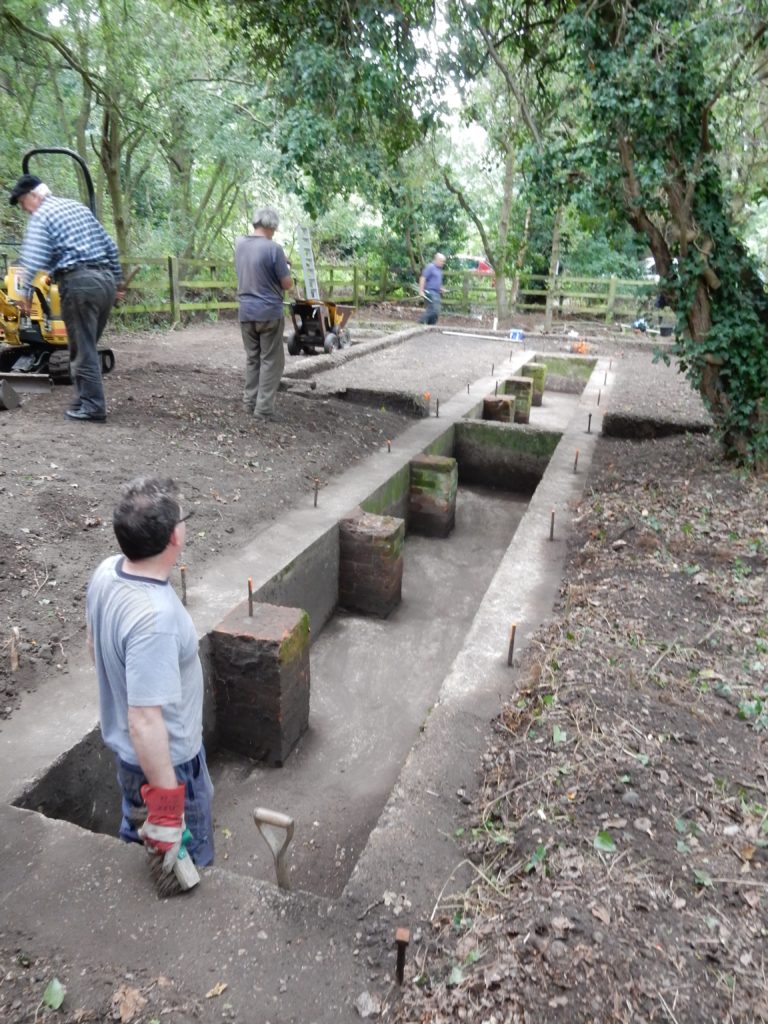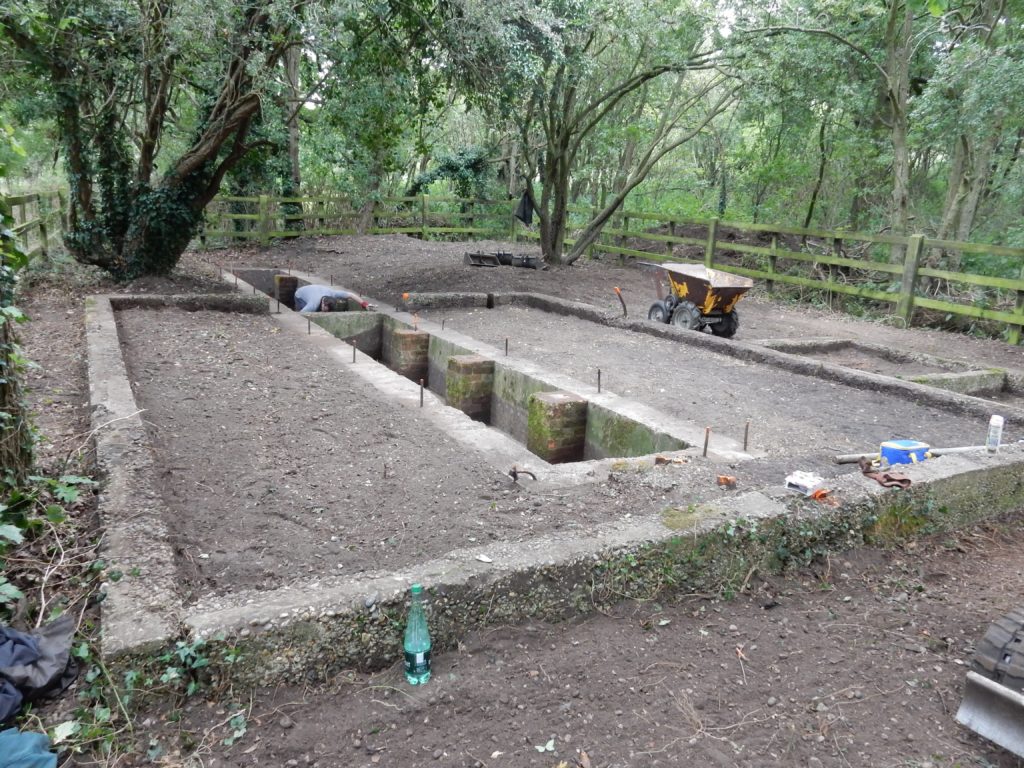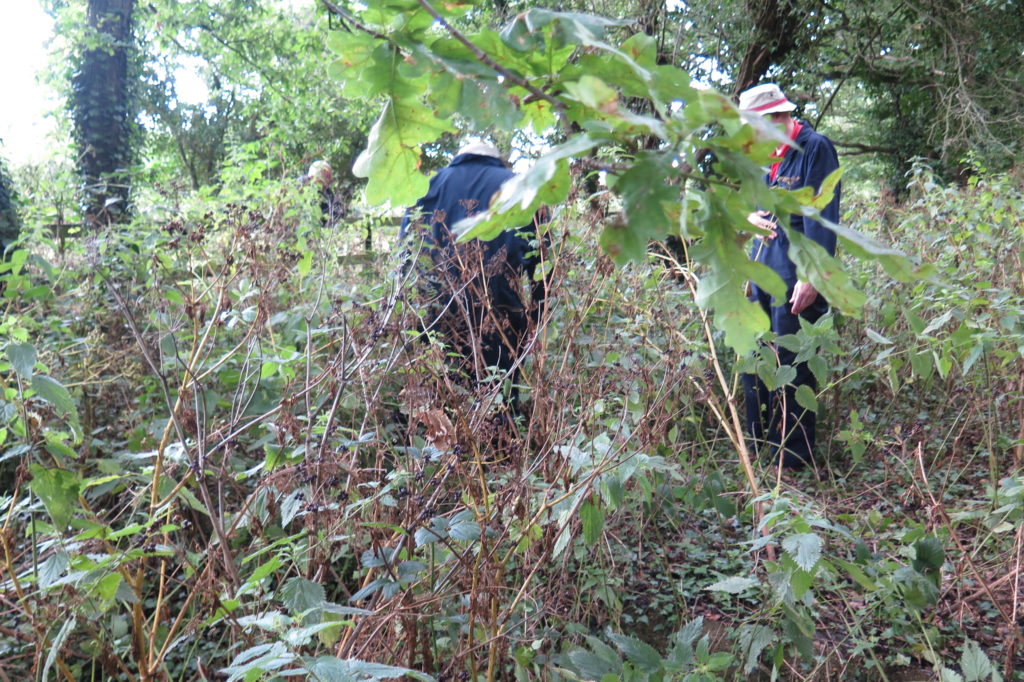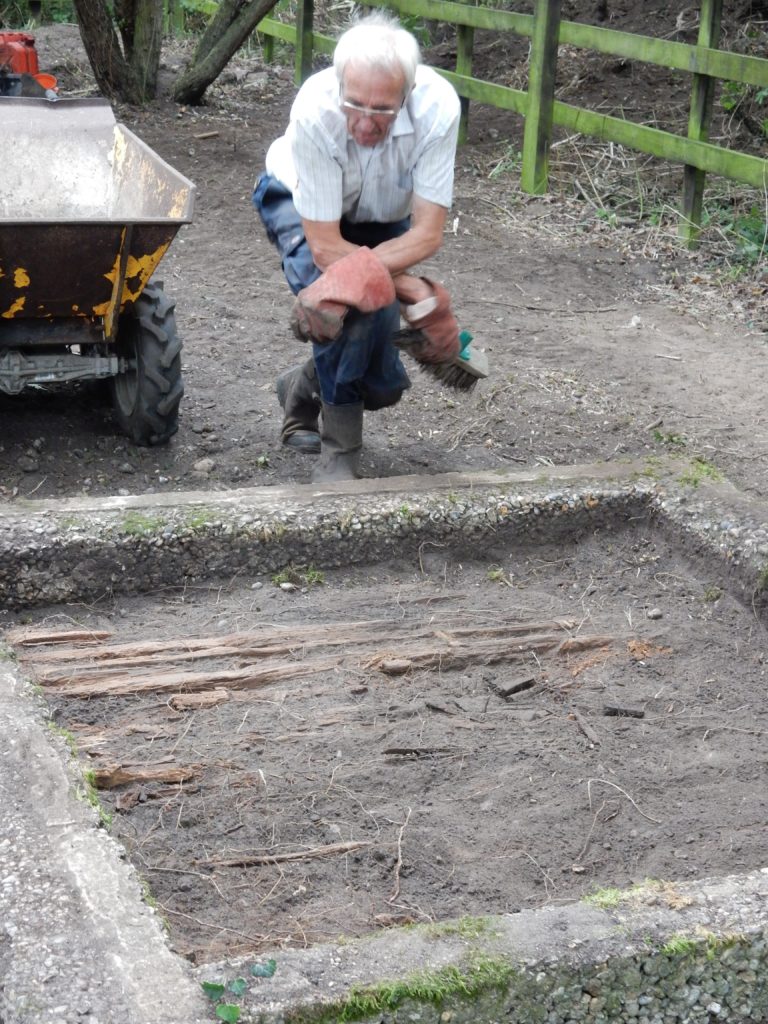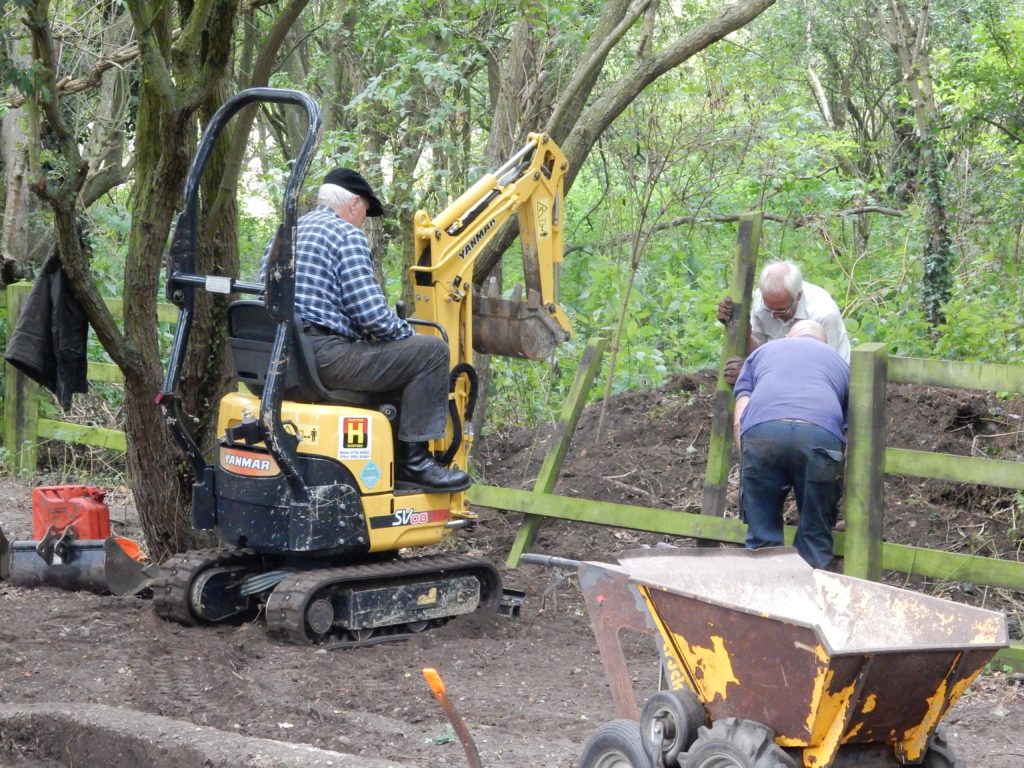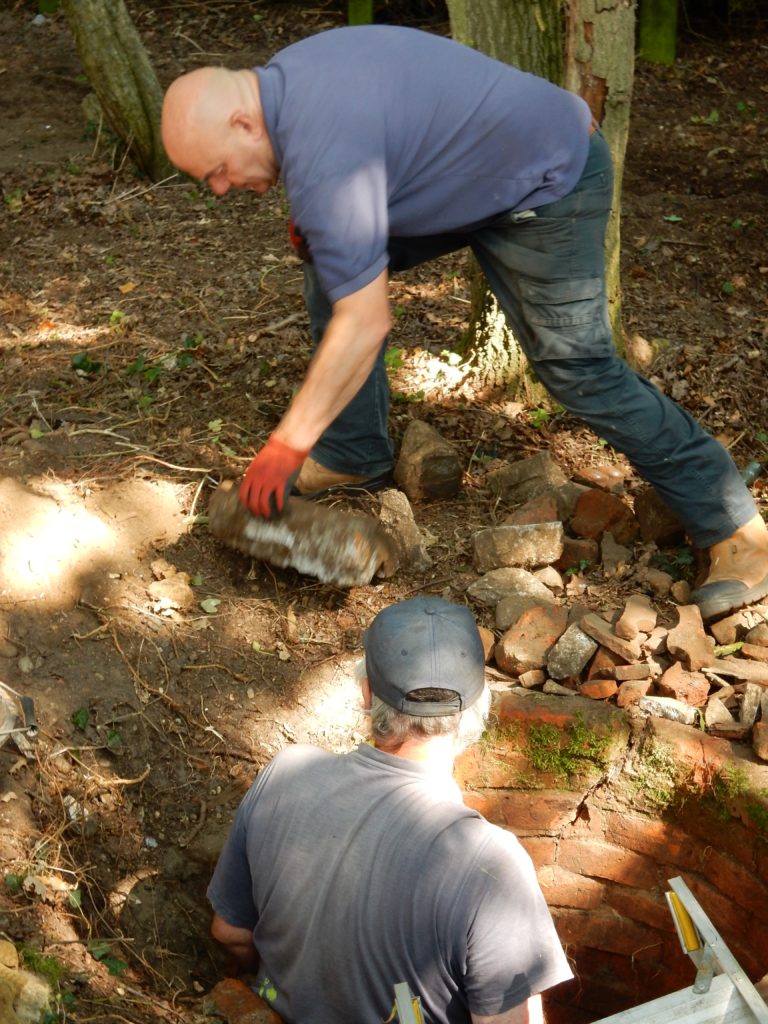
On Saturday August 22nd, and Sunday 23rd, Trust volunteers spent some more time at Halesworth Bird’s Folly (courtesy of the Millennium Green Trustees), enjoying a third day of work on the locomotive shed area. After digging out the inspection and ash pits, we had several tonnes of soil to get rid of – so we hired a small digger from our good friends Harfords of Norwich. John H kindly took delivery of this on Friday, drove it (at 2kph!) down the access roadway, and managed to squeeze it through the gate (just).
time at Halesworth Bird’s Folly (courtesy of the Millennium Green Trustees), enjoying a third day of work on the locomotive shed area. After digging out the inspection and ash pits, we had several tonnes of soil to get rid of – so we hired a small digger from our good friends Harfords of Norwich. John H kindly took delivery of this on Friday, drove it (at 2kph!) down the access roadway, and managed to squeeze it through the gate (just). A combined team from the Millennium Green and the SRT (plus a new volunteer, Robin) spent the weekend onsite: by the end of Sunday, the entire shed base area was clear and tidy, and one side of the ash pit also (the other side is inaccessible because of a very large tree). James as usual hogged the digger most of the time, and Sean’s ultra-small dumper was kept extremely busy – one can only admire his fortitude in driving (well, manhandling, really) this machine, which is very physically demanding.
While all this heavy earth-moving was going on, a defter team, led by Stewart, was gradually digging down inside the well: so much miscellaneous stuff has been thrown there over the years that the soil all has to be sieved for artefacts. Many shards of pottery – some very fine – were found, plus sections of the chain pump, part of the timber pump platform, and various heavily-rusted parts of locomotive “Blyth” (not usable, sadly!). Parts of two buckets – which we have entirely arbitrarily decided are those used to water the locos – completed the collection – so far. We think we may have about another ten feet, or so, to go to hit water. Evidence was found of the wooden shed floor – with one section (in the store-room annexe) still complete in situ – and the main door support slots became visible, proving our supposition that the entire shed was designed for standard gauge.
Quite a lot of (very high quality) steam coal emerged from various holes – and some big chunks of clinker. Most gratifying – and a good morale-booster – was the universal positivity of passers-by about the railway and our plans to rebuild it: most people we talked to couldn’t understand why anyone should so vehemently oppose “such a lovely idea”. The SRT would like to thank the Millennium Green Trustees for this fine opportunity to do a Blyth Valley version of “Time Team”. We would also like to thank whoever was responsible for holding off the rain – on Sunday – until we were ready to leave, and had finished all our tasks!

